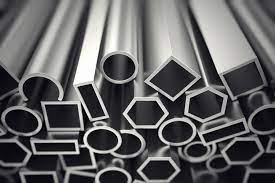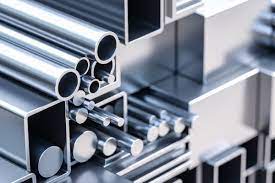Aluminum (Al)
Aluminum (Al), also spelled aluminium, chemical element, a lightweight silvery white metal of main Group 13 (IIIa, or boron group) of the periodic table. Aluminum is the most abundant metallic element in Earth’s crust and the most widely used nonferrous metal. Because of its chemical activity, aluminum never occurs in the metallic form in nature, but its compounds are present to a greater or lesser extent in almost all rocks, vegetation, and animals.

Occurrence and history
Aluminum occurs in igneous rocks chiefly as aluminosilicates in feldspars, feldspathoids, and micas; in the soil derived from them as clay; and upon further weathering as bauxite and iron-rich laterite. Bauxite, a mixture of hydrated aluminum oxides, is the principal aluminum ore. Crystalline aluminum oxide (emery, corundum), which occurs in a few igneous rocks, is mined as a natural abrasive or in its finer varieties as rubies and sapphires. Aluminum is present in other gemstones, such as topaz, garnet, and chrysoberyl. Of the many other aluminum minerals, alunite and cryolite have some commercial importance.

Before 5000 BCE people in Mesopotamia were making fine pottery from a clay that consisted largely of an aluminum compound, and almost 4,000 years ago Egyptians and Babylonians used aluminum compounds in various chemicals and medicines. Pliny refers to alumen, now known as alum, a compound of aluminum widely employed in the ancient and medieval world to fix dyes in textiles. In the latter half of the 18th century, chemists such as Antoine Lavoisier recognized alumina as the potential source of a metal.
Crude aluminum was isolated (1825) by Danish physicist Hans Christian Ørsted by reducing aluminum chloride with potassium amalgam. British chemist Sir Humphry Davy had prepared (1809) an iron-aluminum alloy by electrolyzing fused alumina (aluminum oxide) and had already named the element aluminum; the word later was modified to aluminium in England and some other European countries. German chemist Friedrich Wöhler, using potassium metal as the reducing agent, produced aluminum powder (1827) and small globules of the metal (1845), from which he was able to determine some of its properties.

The new metal was introduced to the public (1855) at the Paris Exposition at about the time that it became available (in small amounts at great expense) by the sodium reduction of molten aluminum chloride through the Deville process. When electric power became relatively plentiful and cheap, almost simultaneously Charles Martin Hall in the United States and Paul-Louis-Toussaint Héroult in France discovered (1886) the modern method of commercially producing aluminum: electrolysis of purified alumina (Al2O3) dissolved in molten cryolite (Na3AlF6). During the 1960s aluminum moved into first place, ahead of copper, in world production of nonferrous metals. For more specific information about the mining, refining, and production of aluminum, see aluminum processing.
